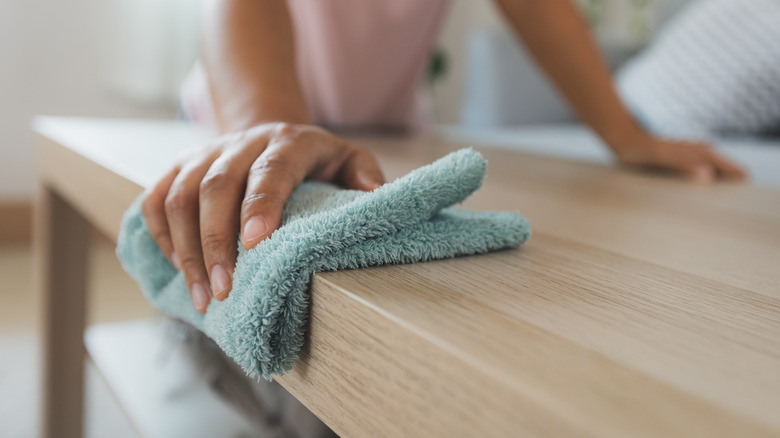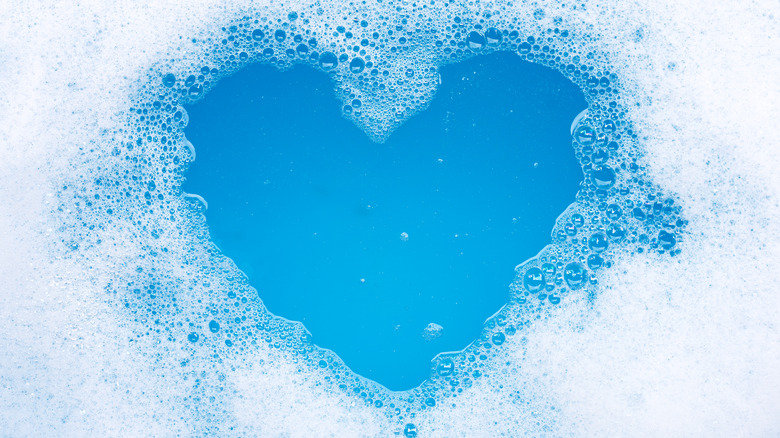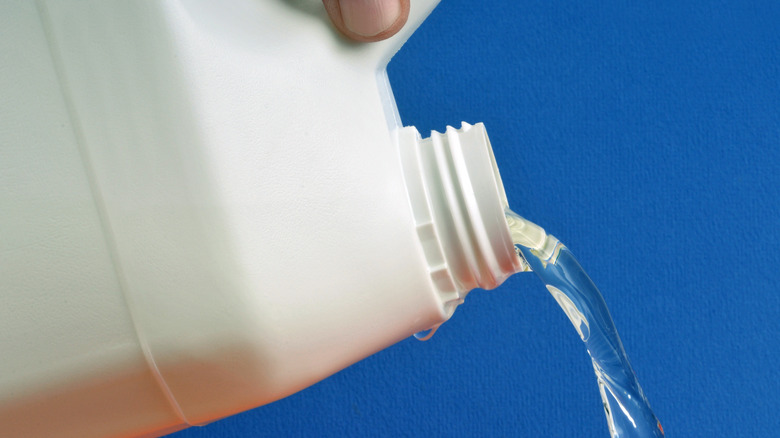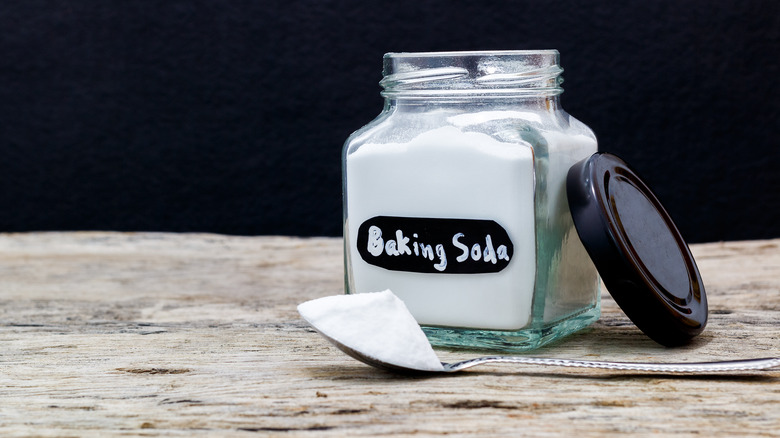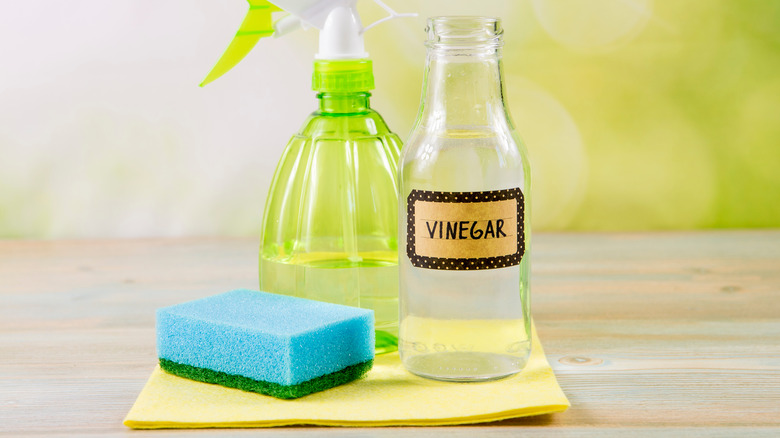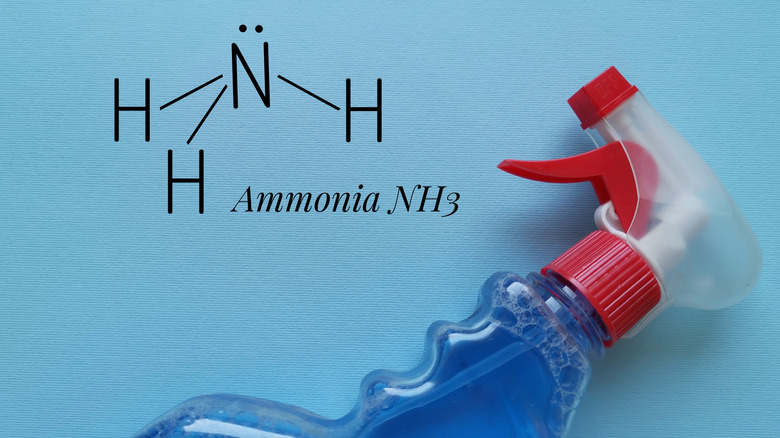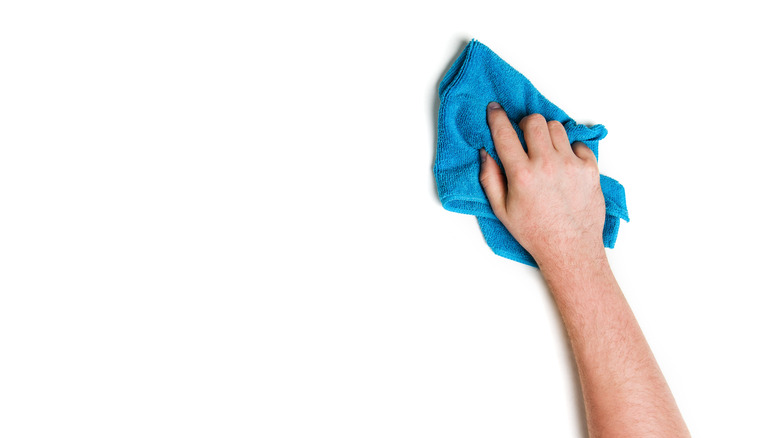Best Ways To Clean Vinyl Furniture
While other materials, like wood and metal, are products that you can naturally find in nature, vinyl is not a naturally emerging material. What Is Vinyl states that this material is a type of plastic that first hit the market in the 1920s. It was a great product that made manufactured items cheaper, more durable, and easier to make than regular plastic. Today, vinyl is most commonly used for the construction of homes and buildings, for example, piping, wire and cable installation, and flooring; however, experts can also use it to make furniture, AZO Materials says.
Tips Bulletin mentions that vinyl furniture is becoming more and more popular in households all over the world. Compared to leather, vinyl can produce the same elegant look with more durability and lower price. Although it is also known for being an easy-to-clean material, it still needs to be regularly maintained to avoid grime, mildew, and stubborn stains from emerging. Here are several ways to clean and maintain your vinyl furniture.
Soap and water
When keeping up the everyday appearance of your vinyl furniture, it's important that you only use mild soap to clean them. According to Tip Bulletin, you should not use harsh soap or chemicals to clean vinyl furniture regularly. Instead, these chemicals should be saved for when cleansing with them becomes absolutely necessary, like when a stubborn stain appears.
To clean with a mild soap, start by filling a bowl with warm water and adding a small amount of the dish soap. When soap suds start appearing, you know you have added enough. Keep in mind, however, that the amount of soap and water you need highly depends on the surface size you need to clean. The larger the surface, the more of the mixture you will need. Then, with a soft-bristle brush or clean cloth, dip into the soap subs and gently scrub away the dirt and grime from the furniture. When you're finished cleaning, empty, rinse, refill the bowl with clean water, and gently get rid of the soap residue from the furniture with a clean, damp cloth.
Bleach
As you continue keeping up your vinyl furniture's appearance through regular maintenance, you may come across mild stains that need to be removed. Tips Bulletin mentions that one of the easiest ways to get rid of these stains is by using bleach. Keep in mind, however, that when it comes to vinyl furniture, you should not use bleach at full capacity because it could cause irreversible damage to your furnishings. Instead, dilute a small amount of bleach in water; the ratio should be 1:5. Remember to always test the solution on a small side of the piece you want to clean before covering the whole thing in the mix.
When handling even the smallest amount of bleach, also ensure you are properly protected with gloves. Then, when your solution is ready and your body is protected, gently dab the mix onto the stain with a clean cloth or sponge. When the stain has been properly removed, rinse the solution off the furniture with clean water and a clean fabric.
Baking soda
Hard and soft vinyl furniture alike can be gently and properly cleaned with baking soda, as well, according to SFGate. To do so, start by dampening the furniture's surface with clean water. Then, sprinkle a little bit of baking soda onto the wet surface. Next, with a damp, clean cloth, rub the baking soda into the furniture piece. To finish, grab a clean, wet cloth and gently rinse the area.
Beyond simple cleaning, there are a variety of other things baking soda can do for your vinyl furniture. One, in particular, is using the product as an abrasive to remove scuff marks that may have appeared on your furnishings over time. SFGate mentions that this technique is not only an easy way to restore your furniture but also keeps it safe with a lack of harsh chemicals. Similarly, baking soda can easily and safely remove tough stains from most surfaces. OfficeFurniture explains that mixing baking soda and water into a paste before applying it to your furniture can work wonders for those stubborn spots.
Vinegar
How To Clean Stuff says that vinegar is a brilliant solution to cleaning vinyl furniture. To use it for your furnishing pieces, start with 1/2 cup of white vinegar and dilute it with 1/2 cup of warm water. Then, especially when cleaning a hard vinyl surface, you should add 1 or 2 teaspoons of Murphy Oil Soap or essential oil to add more cleaning power and a pleasant smell to your solution.
Once your mix has been made, get a cloth or a sponge and dip it into the solution. Before doing so, however, ensure that the fabric or sponge is clean and only designated for cleansing stuff in the house to avoid unwanted damage to your materials. From there, use the fabric or sponge to wipe down the surface of your vinyl furniture, and finish off with another clean cloth, dampened only with water to rinse the surface.
Ammonia
As your furniture is exposed to a high amount of humidity and moisture, mildew may start to appear on various vinyl surfaces. Although mold can bring a stubborn removal process, SFGate mentions that ammonia can make the approach faster and easier. Similar to using bleach, do not use ammonia in its full capacity to clean a vinyl surface because this could cause extensive damage to your furniture. Instead, dilute to ammonia in a 1:4 ratio of the chemical to water.
Also, before using the solution on your furniture's surface, ensure it will not cause any unwanted discoloration by testing it on an unnoticeable spot on your furnishing. Never, for any reason, mix ammonia with bleach due to the deadly gas that could be created when these two chemicals cross paths. When ready to cleanse, take a clean cloth or sponge and dampen it in the solution. Gently scrub the mildew away with the mix and rinse the area thoroughly with a cloth dampened in clean water.
Don't forget your outdoor vinyl furniture
Unlike indoor furniture, outdoor vinyl furniture is exposed to a different, definitely harsher, environment, which may call for a different cleaning process and special techniques to keep the material looking great for a longer period of time.
SFGate specifically mentions that gentle and natural cleaning techniques like soap and water, baking soda, and vinegar work best for cleaning outdoor furniture. Harsh chemicals, like bleach, on the other hand, are not recommended due to the premature fading and wear and tear it causes when mixed with the uncontrollable outside weather changes.
Aside from gentle cleaning, you can also further protect your outdoor vinyl furniture by covering the surface with a towel during its use, whether that would mean sitting on an outdoor patio chair or lounging on a recliner next to your pool. Covering outdoor vinyl furniture during harsh weather, like rain or snow, also extends its appearance and life.
Use soft utensils
Whether you are cleaning indoor or outdoor furniture, HomeSteady shares several tips and tricks to clean your vinyl surfaces properly and thoroughly. Especially when cleaning furnishings with small cracks and crevices, it may be hard to wash the material thoroughly. However, soft-bristled toothbrushes and cleaning erasers are small enough to fit in these hard-to-reach areas and properly clean the surface. You must ensure, however, that the cleaning utensils used to wipe down all areas of your vinyl are not rough or sharp because these can cause an extensive amount of damage to your furniture.
When cleaning your vinyl furniture, you can move it outside or into your bathtub before starting the process to avoid getting dirt and grime in other areas of your household. In addition, some vinyl cushions are machine washable, making the cleaning process even more productive, so ensure you read the small label on the pieces when you get them. This can speed up your furniture's cleaning process and expose other parts to get an even deeper clean.
